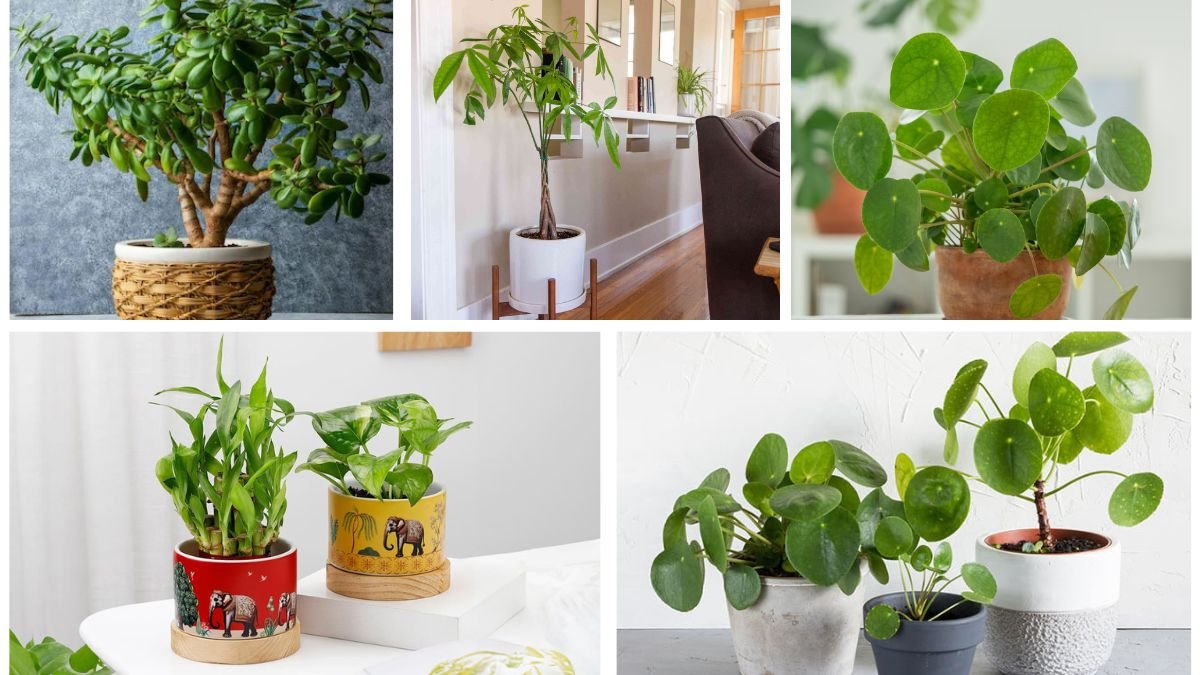For centuries, plants have been seen not only as a source of oxygen and beauty but also as symbols of prosperity, luck, and good energy. Among these, money plants stand out for their strong association with wealth and positivity. In cultures like Feng Shui and Vastu Shastra, certain plants are believed to attract financial stability, enhance harmony, and purify the environment—all while adding a refreshing touch of greenery to your home or office.
But not all money plants are the same. Some are traditional favorites, while others are modern additions that combine symbolic meaning with aesthetic appeal. In this article, we’ll explore five money plants that bring prosperity and natural beauty, along with tips on how to grow and care for them.
1. Devil’s Ivy (Epipremnum aureum) – The Classic Money Plant
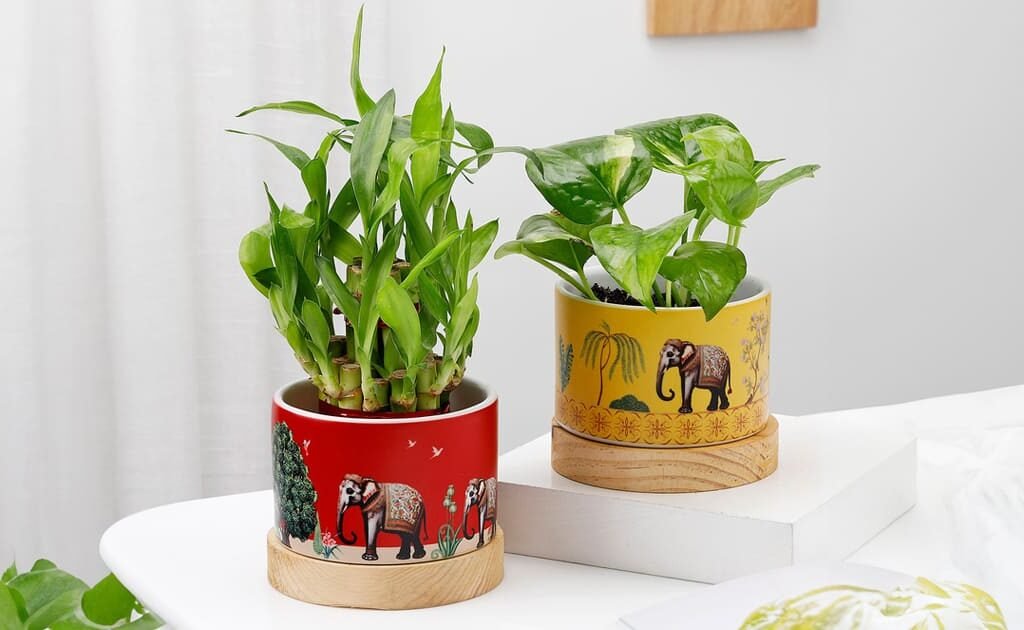
When most people think of a “money plant,” the first image that comes to mind is Devil’s Ivy, also known as Pothos or Epipremnum aureum. With its glossy, heart-shaped leaves streaked with golden or green patterns, this plant is one of the most popular indoor plants worldwide.
Why It’s Considered a Money Plant:
- In Feng Shui, Pothos is believed to attract wealth, prosperity, and positive energy.
- Its trailing vines symbolize continuous growth, making it a powerful representation of financial stability.
Care Tips:
- Light: Thrives in bright, indirect sunlight but also tolerates low light.
- Watering: Water when the top inch of soil feels dry. Avoid overwatering to prevent root rot.
- Placement: Place near the entrance or southeast corner of the house for prosperity, according to Vastu.
Added Beauty:
The cascading vines look stunning in hanging baskets, wall shelves, or tabletop pots, enhancing both modern and traditional interiors.
2. Jade Plant (Crassula ovata) – The Symbol of Wealth and Success
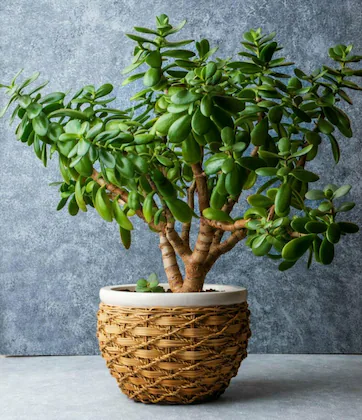
The Jade Plant, a succulent with thick, coin-shaped leaves, is another iconic money plant often gifted as a symbol of prosperity. In Feng Shui, its round leaves represent coins and wealth, making it a popular choice for homes and offices.
Why It’s Considered a Money Plant:
- The coin-shaped leaves symbolize financial luck.
- It is often called the “friendship tree” or “lucky plant,” symbolizing positive relationships and steady income.
Care Tips:
- Light: Prefers bright, indirect sunlight. Place near a south-facing window indoors.
- Watering: Water sparingly; succulents store water in their leaves. Let the soil dry completely between watering.
- Placement: Place near entrances, office desks, or living rooms to attract prosperity.
Added Beauty:
Its compact, tree-like shape makes it an excellent decorative piece. With proper care, Jade plants can live for decades, growing more beautiful over time.
3. Chinese Money Plant (Pilea peperomioides) – The Coin Plant
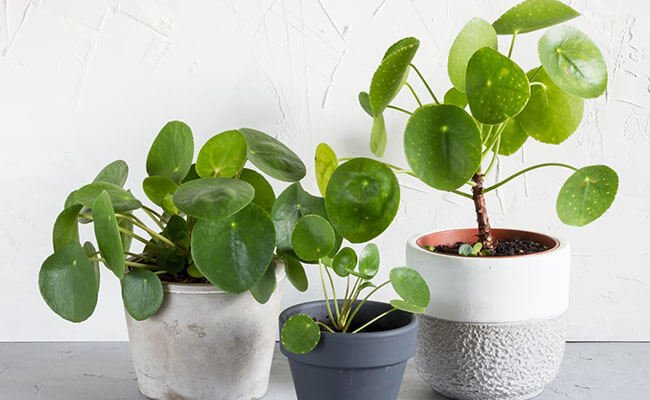
The Chinese Money Plant, also known as Pilea peperomioides, has become a trendy houseplant across the globe. Its unique round, pancake-like leaves resemble coins, symbolizing financial prosperity and abundance.
Why It’s Considered a Money Plant:
- The coin-shaped leaves represent wealth and fortune.
- In Chinese culture, it is believed to bring financial success to its owner.
Care Tips:
- Light: Grows best in bright, indirect light. Too much direct sunlight can scorch the leaves.
- Watering: Water moderately when the soil feels dry, ensuring proper drainage.
- Placement: Place in living rooms, bedrooms, or office desks for prosperity and style.
Added Beauty:
With its modern, minimalistic look, the Chinese Money Plant adds a chic touch to home décor. Its symmetrical leaves are a natural conversation starter and perfect for stylish indoor spaces.
4. Pachira Aquatica – The Money Tree
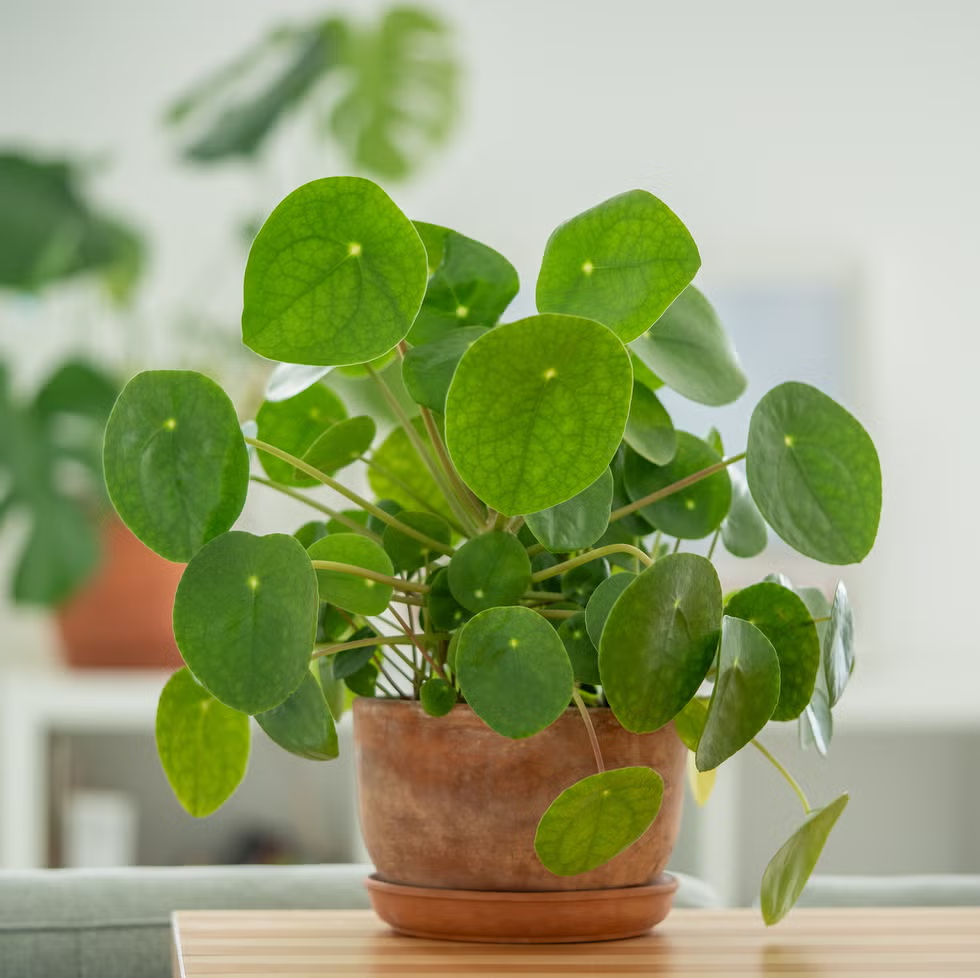
The Money Tree, scientifically known as Pachira aquatica, is one of the most famous plants associated with wealth and good fortune. Often sold with braided trunks, the money tree is a favorite in Feng Shui practices for attracting prosperity.
Why It’s Considered a Money Plant:
- According to legend, a poor man prayed for wealth and discovered this plant, which made him prosperous.
- Its braided trunk symbolizes locking in financial fortune, while its five-lobed leaves represent the five elements of balance (earth, fire, water, metal, and wood).
Care Tips:
- Light: Prefers bright, indirect sunlight. Can adapt to medium light indoors.
- Watering: Water thoroughly but infrequently—allow the topsoil to dry before watering again.
- Placement: Place in the southeast corner of your home or office for financial growth.
Added Beauty:
The braided trunks and lush foliage make the money tree an ornamental showpiece, perfect for living rooms or office reception areas. It adds both prosperity and elegance to any space.
5. Lucky Bamboo (Dracaena sanderiana) – The Feng Shui Favorite
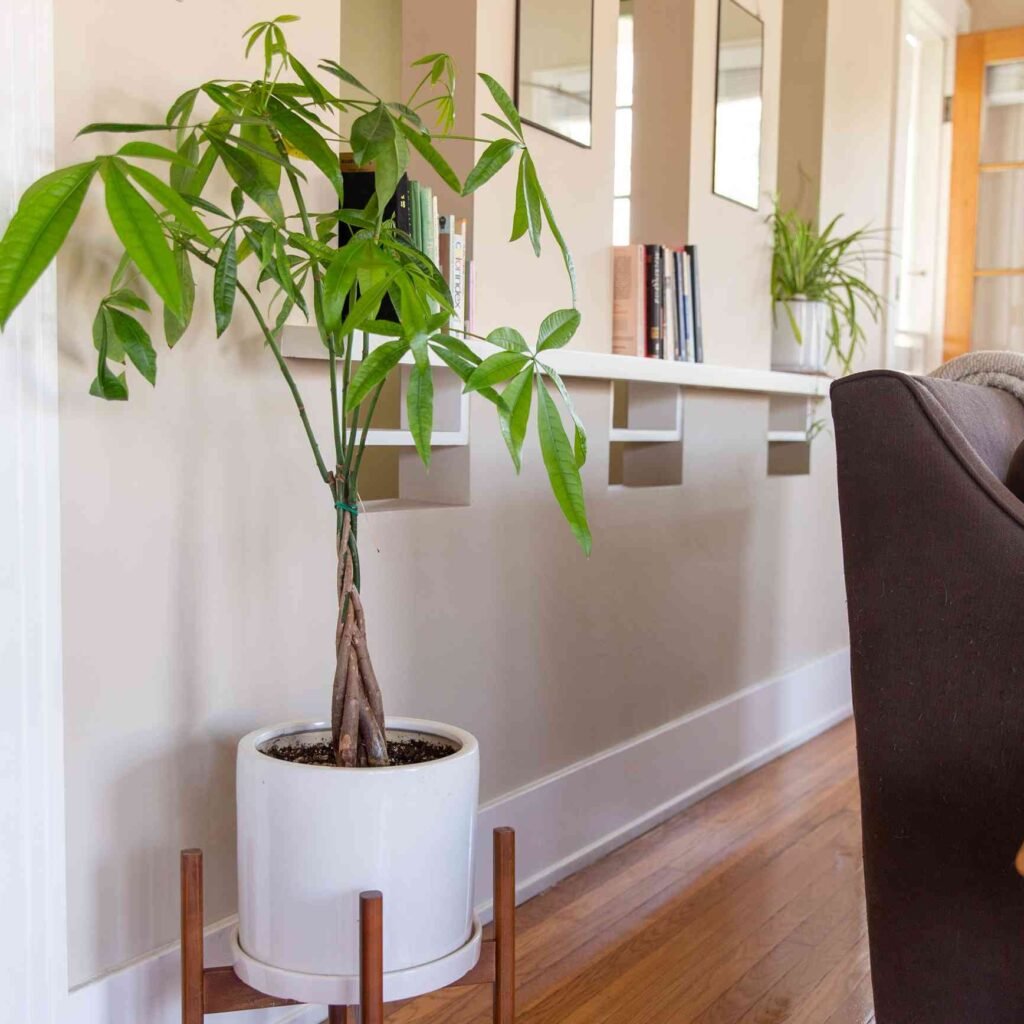
Although technically not bamboo, Lucky Bamboo has been a symbol of luck, prosperity, and positive energy for centuries, especially in Chinese culture. Its stalks, often arranged in glass vases or soil pots, are believed to bring harmony and fortune.
Why It’s Considered a Money Plant:
- The number of stalks has specific meanings:
- 2 stalks – Love and harmony
- 3 stalks – Happiness, wealth, and longevity
- 8 stalks – Growth and prosperity
- 9 stalks – Great luck
- It’s one of the most popular plants used in Feng Shui for financial growth.
Care Tips:
- Light: Thrives in low to moderate indirect light.
- Watering: Can grow in water with pebbles or in soil. If in water, change it every 2–3 weeks.
- Placement: Best placed in the east or southeast direction of your home.
Added Beauty:
Lucky bamboo looks elegant in minimalist glass containers or decorative pots. It can be styled in spiral or braided forms, making it a centerpiece that adds beauty and prosperity at once.
Tips for Growing Money Plants Successfully
No matter which money plant you choose, here are a few universal tips to keep them healthy and thriving:
- Use Well-Draining Soil – Prevents waterlogging and root rot.
- Provide Adequate Light – Most money plants prefer bright, indirect light.
- Avoid Overwatering – This is the most common mistake plant owners make.
- Regular Pruning – Encourages new growth and keeps the plant attractive.
- Positive Placement – According to Feng Shui and Vastu, placing money plants in the southeast direction enhances prosperity.
Why Money Plants Are More Than Just Symbolic
While their symbolism is powerful, money plants also offer practical benefits:
- Air Purification: Many money plants, like Devil’s Ivy and Lucky Bamboo, filter indoor toxins.
- Stress Reduction: Greenery indoors improves mental well-being and productivity.
- Natural Décor: Their unique shapes and vibrant leaves make them beautiful indoor companions.
So even if you don’t believe in the spiritual aspect, these plants are still valuable for their natural beauty and health benefits.
Conclusion
Bringing home a money plant is more than just an aesthetic choice—it’s an invitation to positivity, growth, and harmony. From the classic Devil’s Ivy to the elegant Money Tree, each plant carries its own symbolism of prosperity while enriching your indoor space with natural beauty.
To recap, the 5 money plants that bring prosperity and natural beauty are:
- Devil’s Ivy (Epipremnum aureum)
- Jade Plant (Crassula ovata)
- Chinese Money Plant (Pilea peperomioides)
- Money Tree (Pachira aquatica)
- Lucky Bamboo (Dracaena sanderiana)
Whether you believe in their mystical properties or simply admire their charm, money plants are a perfect addition to your home or office. They symbolize growth, abundance, and resilience—qualities that everyone can welcome into their lives.
